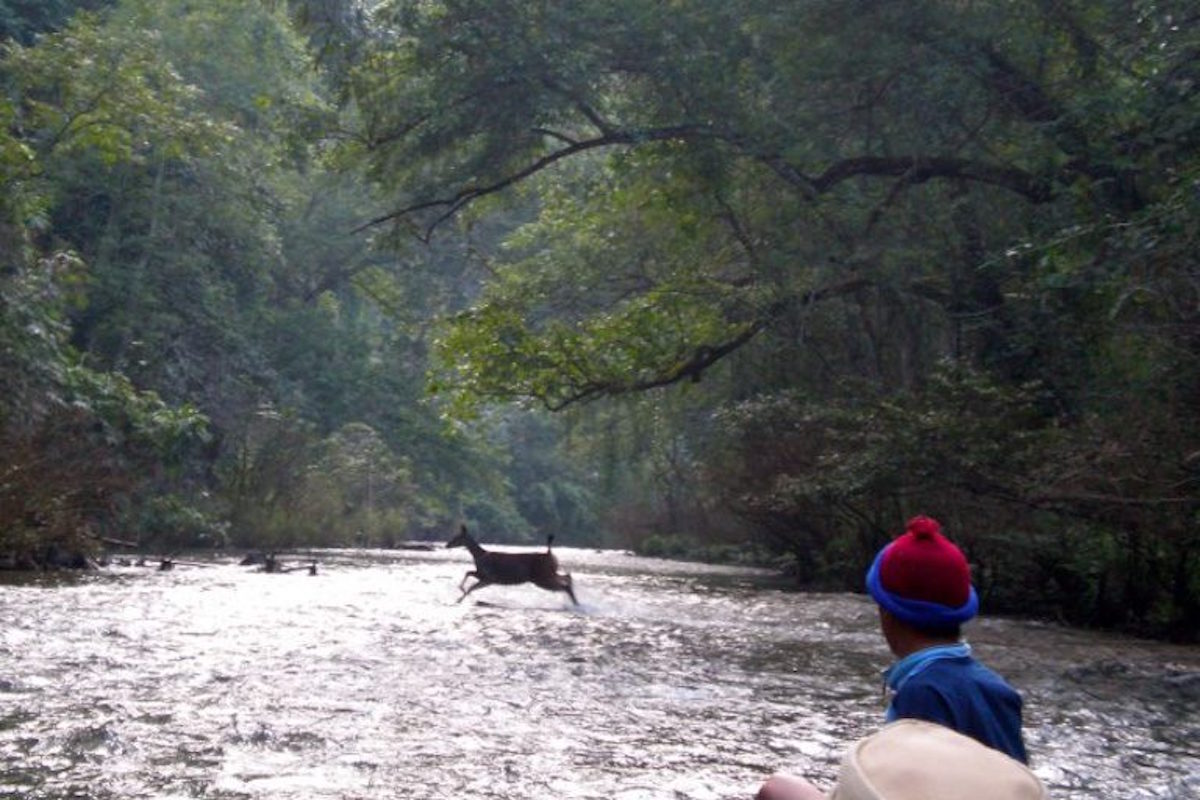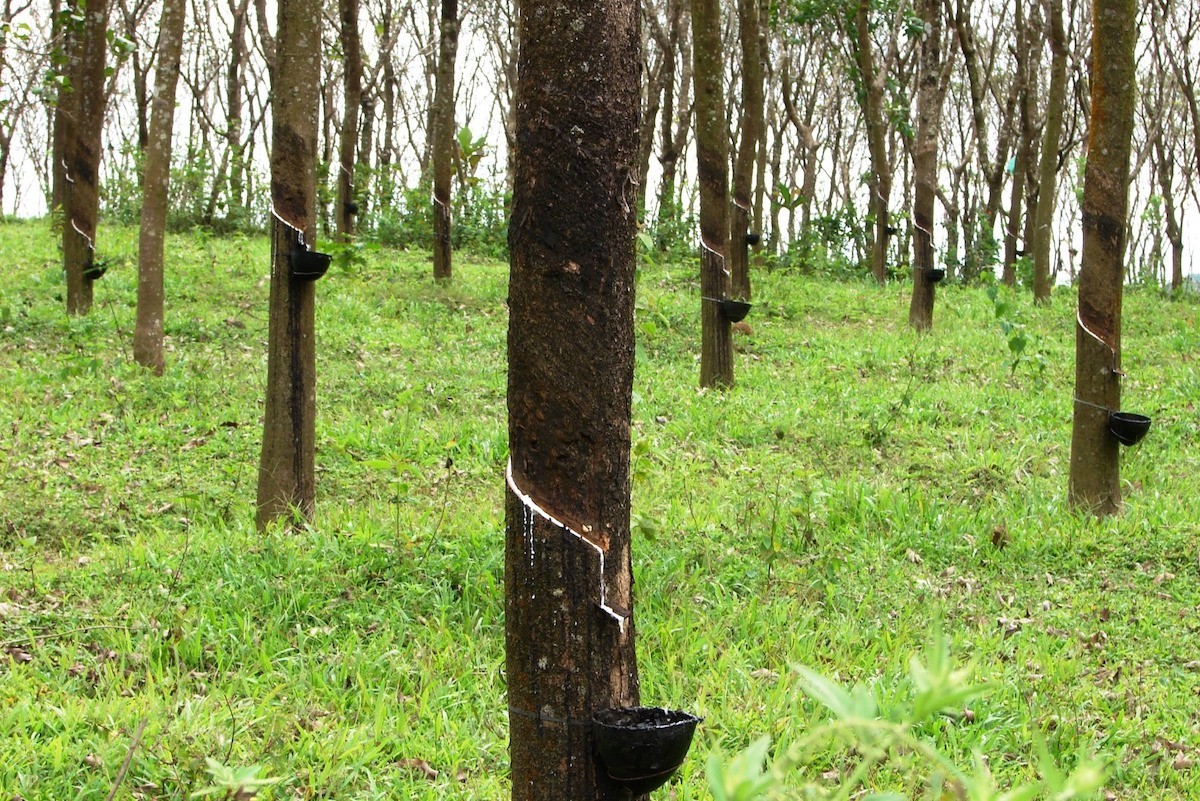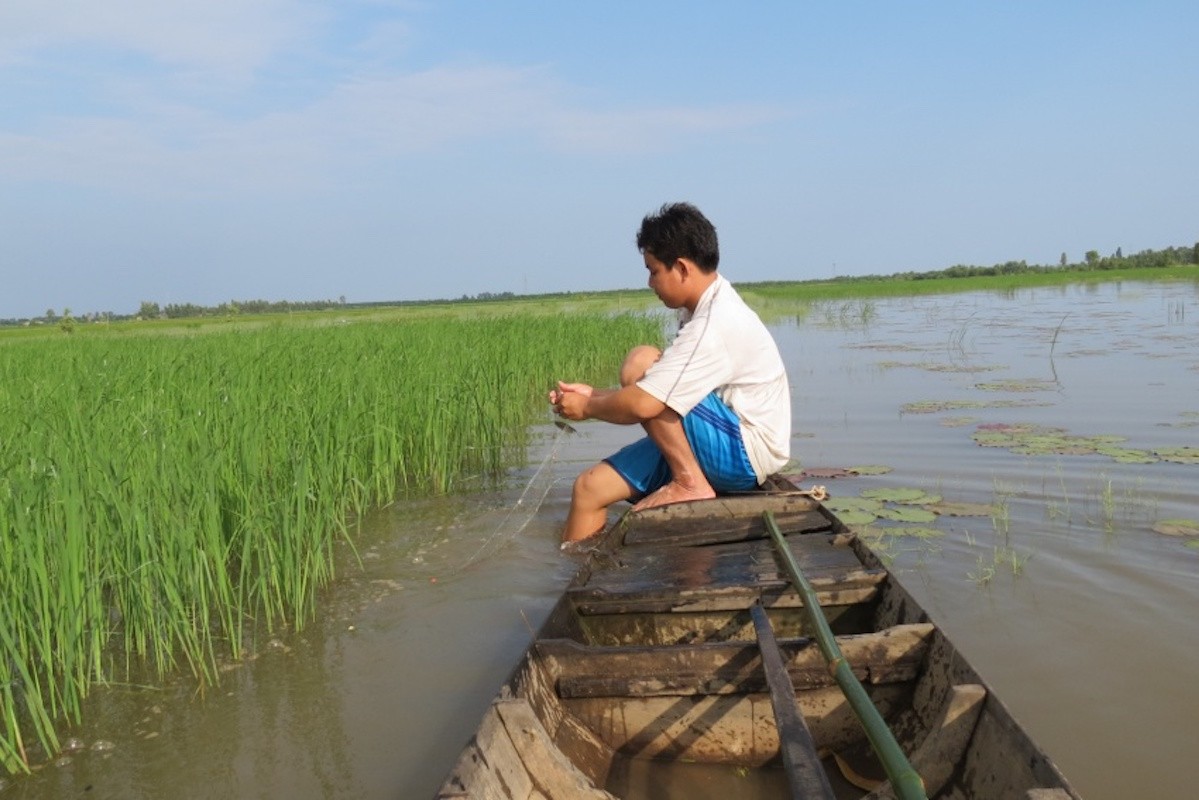- A four-year research project in a national protected area in Laos established a connection between higher payments for more wildlife sightings and improved protections for wildlife.
- Over the course of the study, sightings of common wildlife rose by more than 60 percent.
- Payments were funded by the entry fees paid by tourists.
- They were placed in village development funds, which would then finance projects like school construction and healthcare.
Making ecotourism pay for local communities while also protecting wildlife has proven a challenge in many parts of the world. Often, the boost in a local economy doesn’t always convince everyone to put conservation first. But a recent research project in Laos, carried out with the Wildlife Conservation Society (WCS) and Foundations of Success (FOS), demonstrates that linking cash payments with results, such as the number of animals seen, could be enough to discourage hunting and other practices detrimental to wildlife numbers.
“Many projects claim to be benefiting wildlife, but they often lack this direct link,” Bounpheng Phoomsavath, director of the Nam Et-Phou Louey National Protected Area, where the study took place, said in a statement.
Without tying incentives to results, “Villagers get benefits but the wildlife populations continue to decline,” Phoomsavath said. “The direct links are the key to our success.”

Over the course of four years, a team of wildlife managers and scientists set up a scheme to pay villages on the periphery of Nam Et-Phou Louey National Protected Area based on the species and number of animals that tourists saw on visits to the park. Nam Et-Phou Louey is home to sambar deer, otters and macaques, along with predators including tigers and leopards. But the push for wildlife parts, combined with access to weapons, led to a surge in illegal hunting within the protected area in recent years.
The strategy called for development funds in the villages to receive a set amount of money per tourist visiting the park. But then, when certain animals were spotted, the funds would get a bonus, ranging from a little more than $1 for civets and porcupines, to $225 for a tiger sighting (though tourists didn’t see one in the park during the study period). These prices reflected how threatened the animals are as well as the likelihood of seeing them, and the team settled on using a set fee to be paid by all tourists that would go toward funding these bonuses.
The project also penalized communities if someone from one of them was caught breaking the law — by hunting, for instance.
Each year, after the tourists had all packed up and the season was over, each village voted on how it would spend its share of the fees and bonuses, on projects such as building or rehabilitating a school, for example, or purchasing medicine.

“If eco-tourism or nature tourism is going to help increase these wildlife populations,” Phoomsavath said, “there must be a direct link between the incentives for communities and the wildlife itself.”
By the end of the study, the researchers found that the more commonly seen animals (or evidence of them, like their tracks) were sighted 63 percent more often than at the beginning.
The thrust of this research was to measure how effective incentives to protect wildlife could be at actually changing people’s behavior. In technical parlance, the study’s authors were trying to understand if their “theory of change,” which posited that payments would encourage would-be hunters to shelve their weapons, held water. By their estimation, it did, and the authors argue that the paper resulting from the project, published Feb. 28 in the journal PLOS ONE, lays out a clear method for measuring the impacts of these types of projects in other parts of the world.
“This study illustrates the importance of monitoring along a theory of change to evaluate if and how a conservation strategy is leading to expected outcomes and to inform adaptive management,” Santi Saypanya, the deputy director of WCS in Laos, said in the statement.

Banner image of an otter in Cambodia by Rhett A. Butler/Mongabay.
Follow John Cannon on Twitter: @johnccannon
CITATION
Eshoo, P. F., Johnson, A., Duangdala, S., & Hansel, T. (2018). Design, monitoring and evaluation of a direct payments approach for an ecotourism strategy to reduce illegal hunting and trade of wildlife in Lao PDR. PLOS ONE, 13(2), 1–18. https://doi.org/10.1371/journal.pone.0186133





